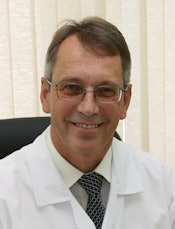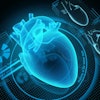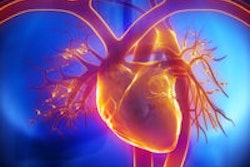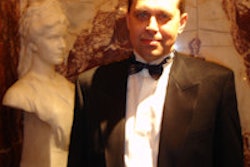
Russian radiology still faces huge challenges in terms of equipment availability and variable education standards, but reforms are now being implemented and are already redressing the balance, noted Dr. Igor Tyurin, chief expert in radiology for the Ministry of Health, in an exclusive interview.
Specific government programs to improve the detection and treatment of cardiovascular disease, oncology, tuberculosis, and trauma have led to the introduction of new modalities into Russian hospitals over the past four years, according to Tyurin, who is also chair of the department of radiology at the Medical Academy of Postgraduate Education in Moscow.
"While ultrasound was widely available and developed rapidly, for many years CT, MRI, nuclear medicine, and digital x-ray were lacking from radiology departments," he said. "However, there are now CTs in many district hospitals and digital x-ray in most city hospitals. It is very different to the situation in Russia 10 years ago."
 Training and education must keep abreast of improvements in the availability of modern equipment, according to Dr. Igor Tyurin.
Training and education must keep abreast of improvements in the availability of modern equipment, according to Dr. Igor Tyurin.Moreover, the rapid development of private clinics, ambulances, and investment companies, often in collaboration with state hospitals, has boosted the availability of low-dose digital x-ray, ultrasound, and high-field MRI, as well as PET and PET/CT. Within the past decade, the total number of vascular interventions and MR studies in Russia has increased tenfold, CT has quadrupled, and the annual growth of x-rays and ultrasound has been around 10%, he explained.
"Unfortunately, these technical innovations are not always accompanied with PACS and RIS installations, and the move to digital equipment is not fully realized," Tyurin said, adding that training and education must catch up with the technological progress. "Federal clinics and municipal hospitals have modern equipment, but there aren't enough well-trained radiologists to operate it."
The Russian radiological community and the Ministry of Health are trying to make education more effective by moving it out of the institute and academy classrooms and into the hospitals that house the state-of-the-art equipment, so as to shift the focus from theory to practical application. As a teacher of postgraduates himself, Tyurin stressed the need to educate radiology teachers who may not be well acquainted with modern technology and techniques, in part due to poor standards of English and an inability to afford international congress attendance.
"Improvement to radiology education may come from the wave of younger Russian radiologists who speak fluent English and are computer-literate. It is from these radiologists that teachers must be recruited," he commented. "However, teaching is not well paid. Specialists are financially better off as practical radiologists rather than teachers."
Hope lies in government reforms of the medical education system planned for the coming years, including a significant pay rise for teachers. There will also be a guaranteed residency for physicians who are beginning their careers, the duration of which will differ among specialties. At present, a residency in radiology lasts for two years, compared with four or five in most of Europe. It is hoped that future radiology residencies will be more in line with those elsewhere in Europe.
Continuous professional training is the key to success, according to Tyurin.
"Currently, radiologists in Russia require a monthlong refresher course every five years to maintain certification -- but this is not enough. The reforms will allow access to ongoing education at work for all radiologists and other specialists," he said.
Training will take place through national and regional congresses, local conferences, and short courses dedicated to the anatomical systems, such as thoracic, neuro, cardio, and musculoskeletal imaging. Short refresher courses with well-known invited speakers have not to date been included in the regular programs of postgraduate education. Some future courses may be oriented toward technology -- e.g., MRI or mammography -- and they need to be run in radiology departments so that radiologists can benefit from hands-on demonstrations, he explained.
Last year a new federal program for undergraduate medical students was established across Russia. Experts from different fields of medicine in federal and regional hospitals now work alongside representatives from the Ministry of Health on new teaching programs for continuous medical training. Changes to postgraduate education are slated to take place over the next four years.
Tyurin is involved in creating a program based on national standards for postgraduate education within his own Moscow institute, this being the federal academy for the whole country. The program may be ready next year and rolled out to other institutes afterward, but, for the moment, individual institutes are in charge of developing their own postgraduate programs.
Overall, Russian radiologists need to be better connected, but lack of Internet availability and computer literacy are hurdles to networking, as well as geographical distance, he said. Doctors in Siberia, for instance, find it very difficult to attend conferences often held in Moscow and St. Petersburg.
"The professional community is not well connected across this vast country," Tyurin said. "Telemedicine may be a very effective way to solve this problem."
He suggested that telemedicine principles may in the future prove ideal for application to further education through virtual courses, with several ongoing telemedicine projects in different regions of Russia potentially providing the template for this development.



















